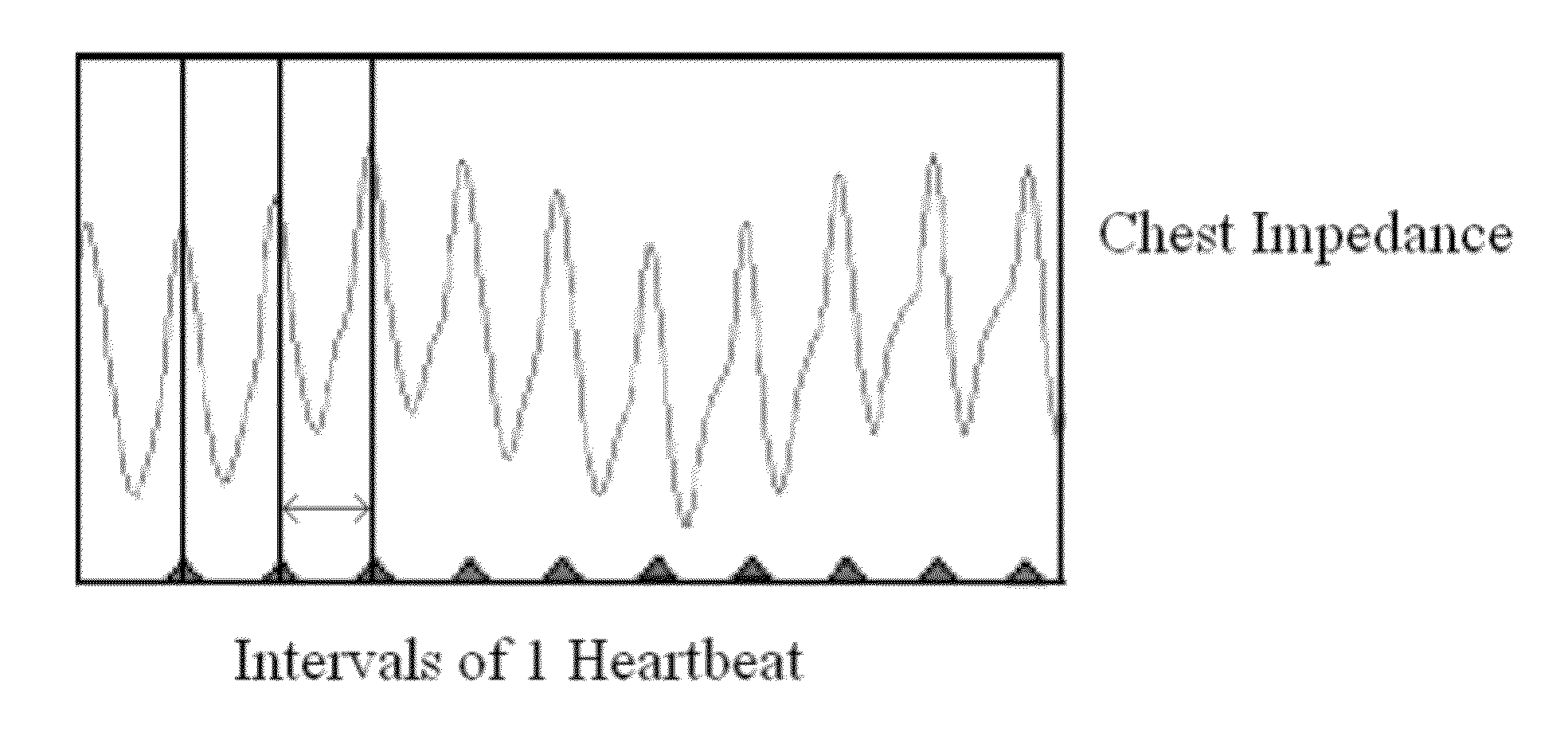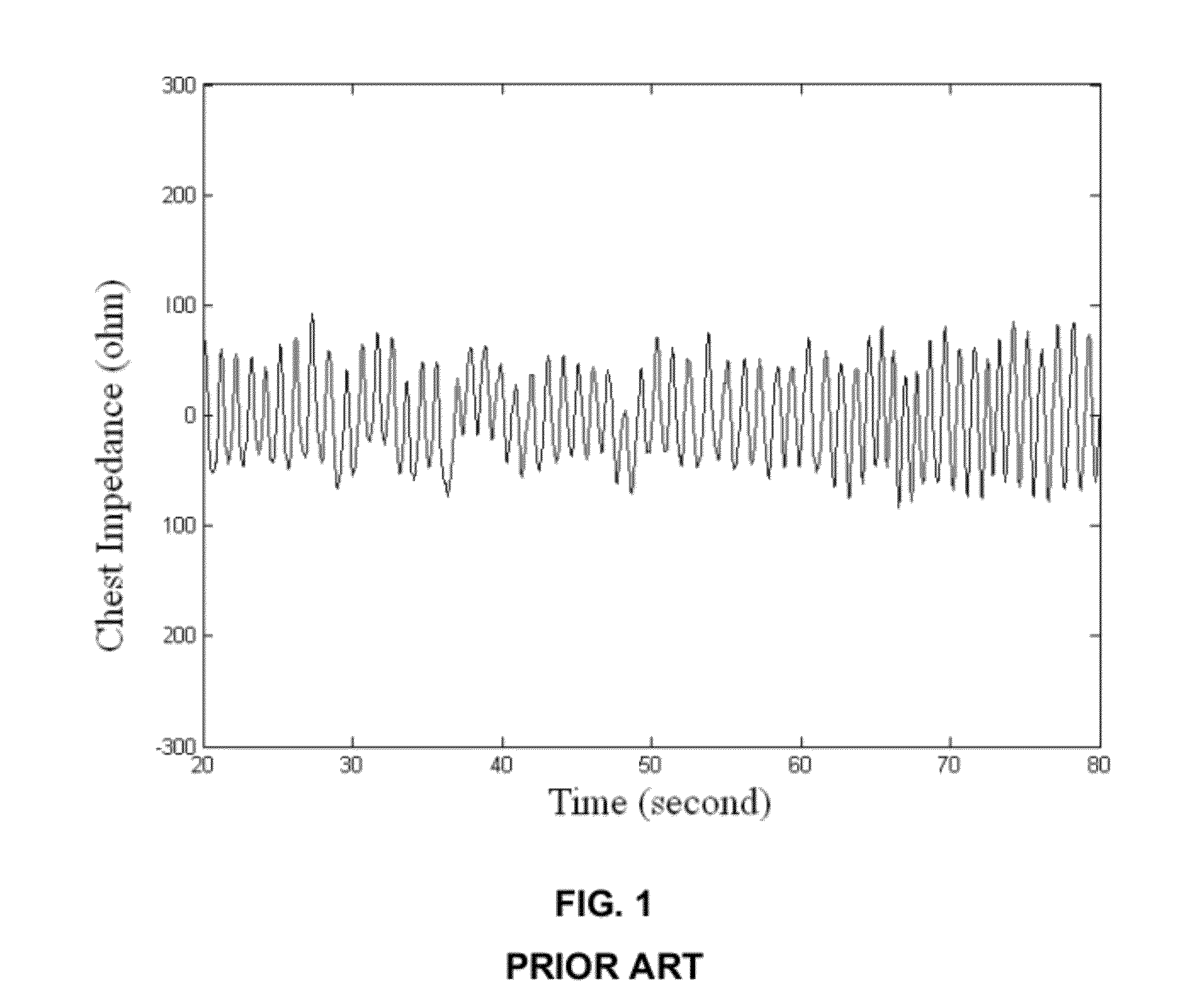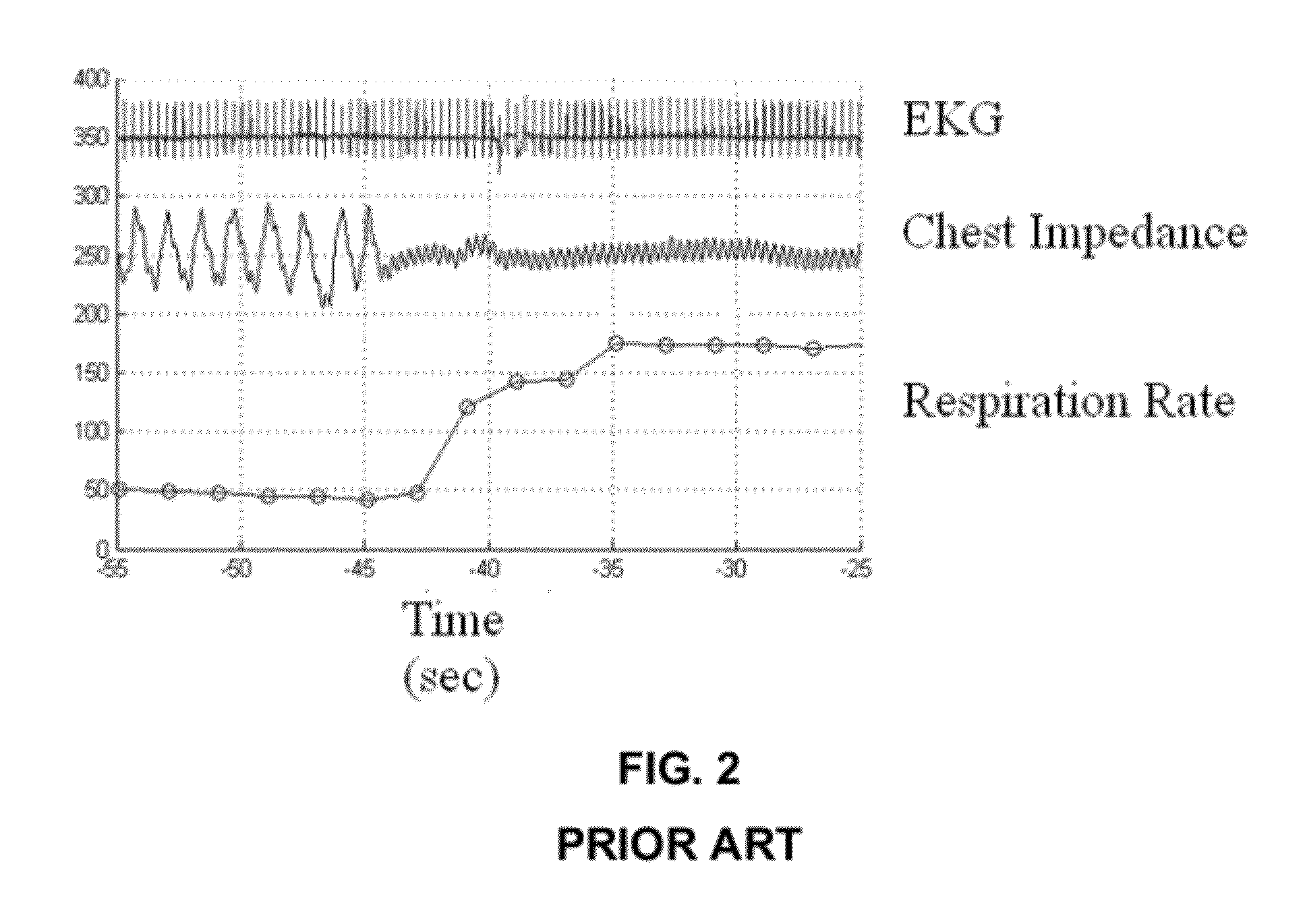Method and system for detecting apnea
a technology for detecting apnea and apnea, applied in the field of detecting apnea, can solve the problems of not being able to recognize apnea, not being able to distinguish the heart signal in chest impedance from the respiratory signal, and not being able to detect apnea. achieve the effect of better detecting apnea
- Summary
- Abstract
- Description
- Claims
- Application Information
AI Technical Summary
Benefits of technology
Problems solved by technology
Method used
Image
Examples
example 1
[0049]The episode depicted in FIG. 2 and FIG. 7 is depicted in its entirety in FIG. 12. This infant stopped breathing at t˜−40 s, had one gasp at t˜−25 s, possibly another small gasp at t˜−3 s, then stopped breathing until stimulation by NICU personnel at t˜+45 s. Additional apnea events occurred until regular breathing resumed near t˜+75 s. FIG. 12 shows the conversion from the doubly filtered chest impedance signal (second to bottom curve) to the probability of apnea (bottom curve). The designation “ABD” means that this was an apnea event coupled with bradycardia and oxygen desaturation. Unlike the traditional signals obtained in the NICU using prior art respiratory monitors, the singly filtered and doubly filtered chest impedance signals give rise to clear indications of an apnea episode due to the significant silence of the signal. Additionally, the probability of apnea curve at the bottom of the graph also provides a clear indication that apnea is occurring.
example 2
[0050]In five infants with high incidences of apnea, 237 randomly selected bradycardia / oxygen desaturation events (heart rate less than 100, SpO2 less than 80%) with greater than 10 seconds stopped breathing were investigated using the methods of the present invention. Three clinicians individually examined all events, and reached agreement on 234 of the 237 windows. The methods of the present invention to detect probability of apnea agreed with the clinicians on 212 of the 234 windows, a 90.6% accuracy rate. Of the 141 instances in which clinicians diagnosed that an apnea episode had occurred, the methods for detecting apnea described herein agreed with the clinicians' conclusion that an apnea episode had occurred in 132 of the instances. Of the 93 events in which clinicians agreed that an apnea episode had not occurred, the methods used herein agreed with the clinicians 86 times.
example 3
[0051]The apnea detection system described herein was used to retroactively identify 100 random potential ABD events from a massive dataset in the University of Virginia hospital database. Of those 100 events, clinicians characterized five as false positives and 6 as real events that only had a duration of less than 30 seconds, with agreement on the other 89 events.
PUM
 Login to View More
Login to View More Abstract
Description
Claims
Application Information
 Login to View More
Login to View More - R&D
- Intellectual Property
- Life Sciences
- Materials
- Tech Scout
- Unparalleled Data Quality
- Higher Quality Content
- 60% Fewer Hallucinations
Browse by: Latest US Patents, China's latest patents, Technical Efficacy Thesaurus, Application Domain, Technology Topic, Popular Technical Reports.
© 2025 PatSnap. All rights reserved.Legal|Privacy policy|Modern Slavery Act Transparency Statement|Sitemap|About US| Contact US: help@patsnap.com



